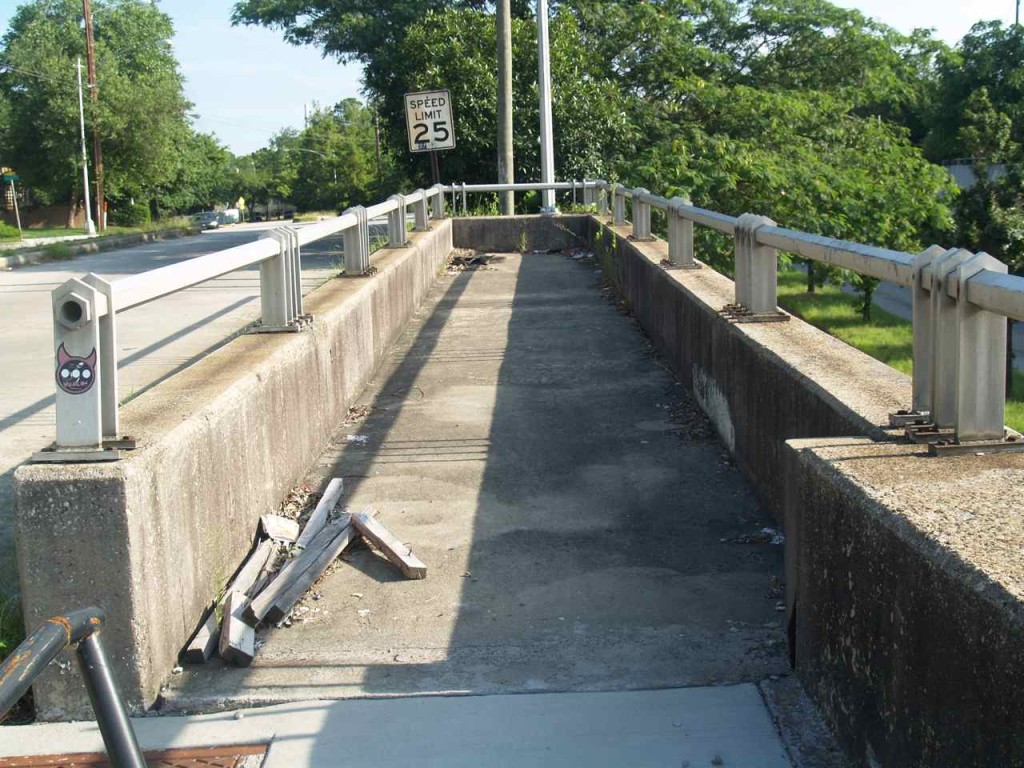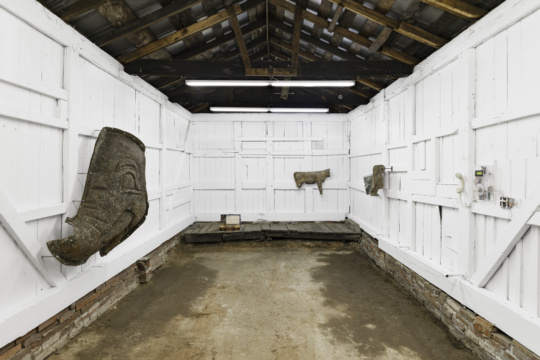For our unmonumentATL series, we asked 13 artists to share their personal un-monuments with our readers. From January 13 to 29, we will present one artist’s submission per day. And don’t miss Nick Kahler‘s incisive two-part essay on the subject. UnmonumentATL was conceived by former BURNAWAY editor Rachel Reese.
The Entombed Staircase
The DeKalb Avenue-Moreland Avenue interchange was constructed in the mid-20th century. When built it must have appeared as a modern engineering marvel. The elegant partial cloverleaf design features Machine Age flourishes with gentle curves and Art Deco-style railings. Drivers could fly over or under the streets and connect to them with long curving ramps flanking either side of Moreland. Consideration was given to pedestrians, as a staircase was built into the structure to let travelers on foot easily walk up or down an enclosed stairwell from one street to the other. With no fanfare, sometime in the late1980s the staircase was enclosed, sealed tight like some tomb of antiquity. No announcement was made to area neighborhoods. Perhaps the action was incident-driven, whether by a mugging or the presence of unsightly squatters. Most likely it was the overwhelming stench of urine that pervaded the passageway. Today all that remains is the mysterious railings along the top and a segment of gnarled handrail protruding from concrete. On the lower Moreland side the outline of a doorway can be seen if one examines the wall of the underpass. Are the stairs still there? Was a squatter sealed inside? Is there still a urine odor inside the passageway? We may never know.

The Visible Trolley Track
The No. 4 Inman Park Trolley once rolled along McLendon Avenue, transporting Candler Park and Lake Claire residents to businesses in Little Five Points or to downtown Atlanta. In the evening it would take them back, all the way to the corner of Clifton and McLendon, where there was an A&P grocery, as well as other businesses.
The trolley service ended more than 50 years ago, replaced first by trackless electric trolleys and later by bus service. Today there is no public transit on McLendon. When the trolley service ended the tracks were simply paved over, indignantly covered and smothered in asphalt and concrete. Some remnants of the tracks could be seen around the city, but they became rare as the decades passed. Today in the street in front of the Flying Biscuit at Clifton and McLendon is one of these remnants. It’s not always visible but emerges into view only when the avenue is in need of repaving. When the road is rough and well-worn, a thin sliver of track rises from the blacktop like the hull of some sunken frigate at low tide. How long will it be visible? It all depends on the budget and schedule of the City of Atlanta’s transportation department.










